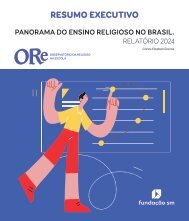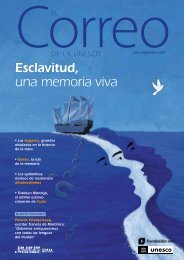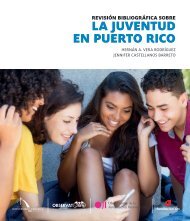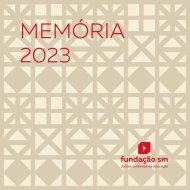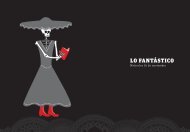Informe PISA 2018 BRASIL (EN)
El Programa para la Evaluación Internacional de Estudiantes (PISA) es una encuesta trienal dirigida a estudiantes de 15 años que evalúa en qué medida han adquirido los conocimientos y habilidades fundamentales para participar plenamente en la sociedad.
El Programa para la Evaluación Internacional de Estudiantes (PISA) es una encuesta trienal dirigida a estudiantes de 15 años que evalúa en qué medida han adquirido los conocimientos y habilidades fundamentales para participar plenamente en la sociedad.
You also want an ePaper? Increase the reach of your titles
YUMPU automatically turns print PDFs into web optimized ePapers that Google loves.
4 | Brazil - Country Note - <strong>PISA</strong> <strong>2018</strong> Results<br />
Performance trends<br />
Figure 2. Trends in performance in reading, mathematics and science<br />
Notes:*indicates mean-performance estimates that are statistically significantly above or below <strong>PISA</strong> <strong>2018</strong> estimates for Brazil.<br />
The blue line indicates the average mean performance across OECD countries with valid data in all <strong>PISA</strong> assessments. The red dotted line indicates<br />
mean performance in Brazil. The black line represents a trend line for Brazil (line of best fit).<br />
Source: OECD, <strong>PISA</strong> <strong>2018</strong> Database, Tables I. B1.10, I. B1.11 and I. B1.12.<br />
• In Brazil, mean performance in mathematics improved over the 2003-18 period, but most of that<br />
improvement was in the early cycles. After 2009, in mathematics, as in reading and science, mean<br />
performance appeared to fluctuate around a flat trend.<br />
• The positive early trends (2000-12) were observed over a period of rapid expansion of secondary<br />
education. Between 2003 and 2012, Brazil added more than 500 000 students to the total population<br />
of 15-year-olds eligible to participate in <strong>PISA</strong>. The proportion of 15-year-olds who were covered by<br />
<strong>PISA</strong> samples increased from about 55% in 2003 to 70% in 2012. It is likely that this expansion in<br />
education opportunities dampened an even more positive underlying trend in student performance.<br />
Indeed, a simulation that assumes that the highest-scoring 25% of 15-year-olds were eligible to take<br />
the test in any given year shows a positive trend amongst this population not only in mathematics<br />
(2003-18), but also in science (2006-18).<br />
© OECD 2019 Volumes I-III



